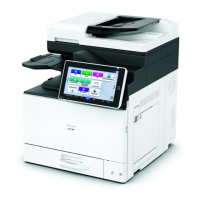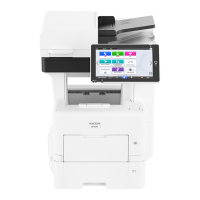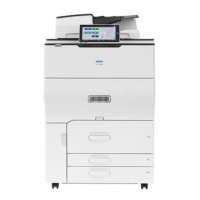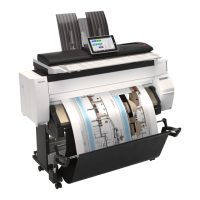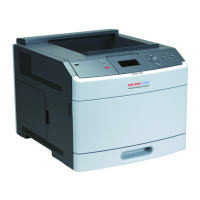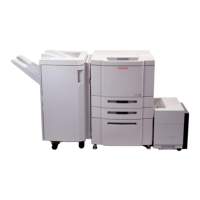294 Chapter 9 Technical information EN
Regulatory information for wireless products
This section contains the following regulatory information pertaining to wireless products:
• Exposure to radio frequency radiation
• Notice to users in Canada (5 GHz)
• Notice to users in Canada
Exposure to radio frequency radiation
CAUTION: The radiated output power of this device is far below the FCC radio frequency exposure limits.
Nevertheless, the device shall be used in such a manner that the potential for human contact during normal
operation is minimized. This product and any attached external antenna, if supported, shall be placed in
such a manner to minimize the potential for human contact during normal operation. In order to avoid the
possibility of exceeding the FCC radio frequency exposure limits, human proximity to the antenna shall not be
less than 20 cm (8 inches) during normal operation.
Notice to users in Canada (5 GHz)
CAUTION: When using IEEE 802.11a wireless LAN, this product is restricted to indoor use, due to its
operation in the 5.15- to 5.25-GHz frequency range. The Innovation, Science and Economic Development
Canada requires this product to be used indoors for the frequency range of 5.15 GHz to 5.25 GHz to reduce
the potential for harmful interference to co-channel mobile satellite systems. High-power radar is allocated
as the primary user of the 5.25- to 5.35-GHz and 5.65- to 5.85-GHz bands. These radar stations can cause
interference with and/or damage to this device.
Compliance with ISED requirement RSS-247 6.4 a) Data transmission is always initiated by software, which is
the passed down through the MAC, through the digital and analog baseband, and finally to the RF chip. Several
special packets are initiated by the MAC. These are the only ways the digital baseband portion will turn on the
RF transmitter, which it then turns off at the end of the packet. Therefore, the transmitter will be on only while
one of the aforementioned packets is being transmitted. In other words, this device automatically discontinue
transmission in case of either absence of information to transmit or operational failure.
ATTENTION : Lors de l’utilisation du réseau local sans fil IEEE 802.11a, ce produit se limite à une utilisation
en intérieur à cause de son fonctionnement sur la plage de fréquences de 5,15 à 5,25 GHz. Innovation,
Science et Développement Economique Canada stipule que ce produit doit être utilisé en intérieur dans la
plage de fréquences de 5,15 à 5,25 GHz afin de réduire le risque d’interférences éventuellement dangereuses
avec les systèmes mobiles par satellite via un canal adjacent. Le radar à haute puissance est alloué pour une
utilisation principale dans une plage de fréquences de 5,25 à 5,35 GHz et de 5,65 à 5,85 GHz. Ces stations
radar peuvent provoquer des interférences avec cet appareil et l’endommager.
Conformité a la norme CNR-247 6.4 a) La transmission des données est toujours initiée par le logiciel, puis
les données sont transmises par l’intermédiaire du MAC, par la bande de base numérique et analogique et,
enfin, a la puce RF. Plusieurs paquets spéciaux sont inities par le MAC. Ce sont les seuls moyens pour qu’une
partie de la bande de base numérique active l’émetteur RF, puis désactive celui-ci a la fin du paquet. En
conséquence, l’émetteur reste uniquement active lors de la transmission d’un des paquets susmentionnés. En
d’autres termes, ce dispositif interrompt automatiquement toute transmission en cas d’absence d’information a
transmettre ou de défaillance.
